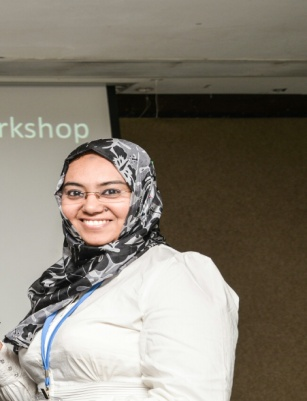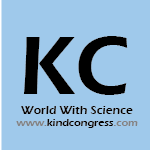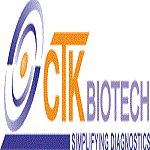Theme: Uniting all to overcome and fight against NTD’s & Infectious diseases for improved health protection
Neglected Tropical Diseases 2018
5th International Conference on Neglected Tropical & Infectious Diseases is scheduled to be held during August 29-30 , 2018, at Boston, USA which welcomes all the members from universities, clinical examination foundations, research organizations, biologists, scientists, researchers, academicians, entrepreneurs, research scholars and delegates from research labs, industries and healthcare sectors to be a part of the conference to share their knowledge on all parts of this rapidly expanded field and then, by providing a showcase of their research in this field and making the efforts to conquer this battle of Neglected Tropical & Infectious diseases which is burden to our human society.
This conference focuses on the theme "Uniting all to overcome and fight against NTD’s and Infectious diseases for improved health protection".
Neglected Tropical Diseases 2018 aims to provide scientific platform for face to face exchange of knowledge and research ideas across these concerns for endemic diseases which is claiming havocs around the globe every year. The conference is designed to give knowledge, ideas and to think out of the box. The aim of the conference is to promote research in the field of neglected tropical diseases with another goal to facilitate exchange of new ideas in these fields and to create a dialogue between scientists, practitioners, health organizations to come together and overcome and conquer this situation.
Neglected Tropical Diseases (NTDs) are a diverse group of communicable diseases which almost covers 17 infectious diseases that are caused by bacteria, parasites, or viruses that more or less affect the poor societies generally affect children and causes significant health and financial burdens and across the underdeveloped nations. They mostly affect populations who are living in poverty, without proper sanitation and in close touch with various infectious vectors and disease causing livestock and animals. NTDs are very common and sometimes fatal and they regularly infect humans. Over 150 countries, with almost over 1 billion people are currently infected and over 2 billion people at verge of risk and are responsible for millions of deaths and disabilities each year, around the globe. According to the reports from World Health Organization (WHO), the major diseases of concern are malaria, which affects more than one third of the world’s population, and have killing more than 1 million children every year; visceral leishmaniasis, affecting about 12 million people and Chagas disease, affecting 18 million people in Latin America alone which sleeping sickness (African trypanosomiasis), which affects half a million people each year.
Infectious diseases are disorders caused by organisms — such as bacteria, viruses, fungi or parasites. Many organisms live in and on our bodies. They're normally harmless or even helpful, but under certain conditions, some organisms may cause disease.Some infectious diseases can be passed from person to person. Some are transmitted by bites from insects or animals. And others are acquired by ingesting contaminated food or water or being exposed to organisms in the environment.Signs and symptoms vary depending on the organism causing the infection, but often include fever and fatigue. Mild infections may respond to rest and home remedies, while some life-threatening infections may require hospitalization.Many infectious diseases, such as measles and chickenpox, can be prevented by vaccines. Frequent and thorough hand-washing also protects one from most infectious diseases.
The U.S. Agency for International Development has recently announced a five year, $100 million fund to provide some major preventive drugs for 40 million people, while Geneva Global has committed $8.8 million for preventive chemotherapy in Rwanda and Burundi which will help in combating these burdens.
The Bill and Melinda Gates Foundation have awarded $47 million to acknowledge and discuss the prominent questions regarding research and development for effective amalgamation. However, these awards are not so sufficient enough compared to overall costs required to meet up the needs in the areas of sub-Saharan Africa and elsewhere around the globe. It is estimated that approximately $1 billion to $2 billion fund must be needed within a five year program to control or somewhat eliminate the major Neglected Tropical & Infectious Diseases in sub-Saharan Africa.
Why to attend??
With members from around the world focused on learning more about the Neglected Tropical & Infectious Diseases treatment and their management. This conference will provide the best platform and the best occasion to outreach the great gathering of participants from around the world. This scientific stage will provide an opportunity to the scientists, researchers to conduct presentations, exchange and update knowledge about the current situation of neglected tropical diseases treatment and receive recognition on global platform and join hands for this global human cause.
Directors/Senior Directors/Executive Directors and Vice Presidents/Senior Vice Presidents/Executive Vice Presidents and Heads/Leaders/Partners of
- CROs and CMOs
- Clinical Research organizations
- Pharma/Biotech and Medical Device industries
- Hospitals, Associations
- Scientists
- Industries & Healthcare sectors
Medical Directors, Principal Investigators, Methodologists, and other clinical research professionals along with Academicians: University Faculties like Directors, Senior Professors/Assistant Professors/ Associate Professor, Research Scholars, scientists who are related to clinical and medical research.
Clinical/Pharmaceutical and biotech industry professionals , researchers with responsibilities in:
- Neglected Tropical & Infectious Diseases
- Clinical Research in Neglected Tropical & Infectious Diseases
- Biostatistics/Data management
- Clinical Design/ Protocol Design/ Clinical Strategy
- Clinical Trial Management/Clinical Trial Supplies
- Clinical Trial Management/Clinical Trial Supplies
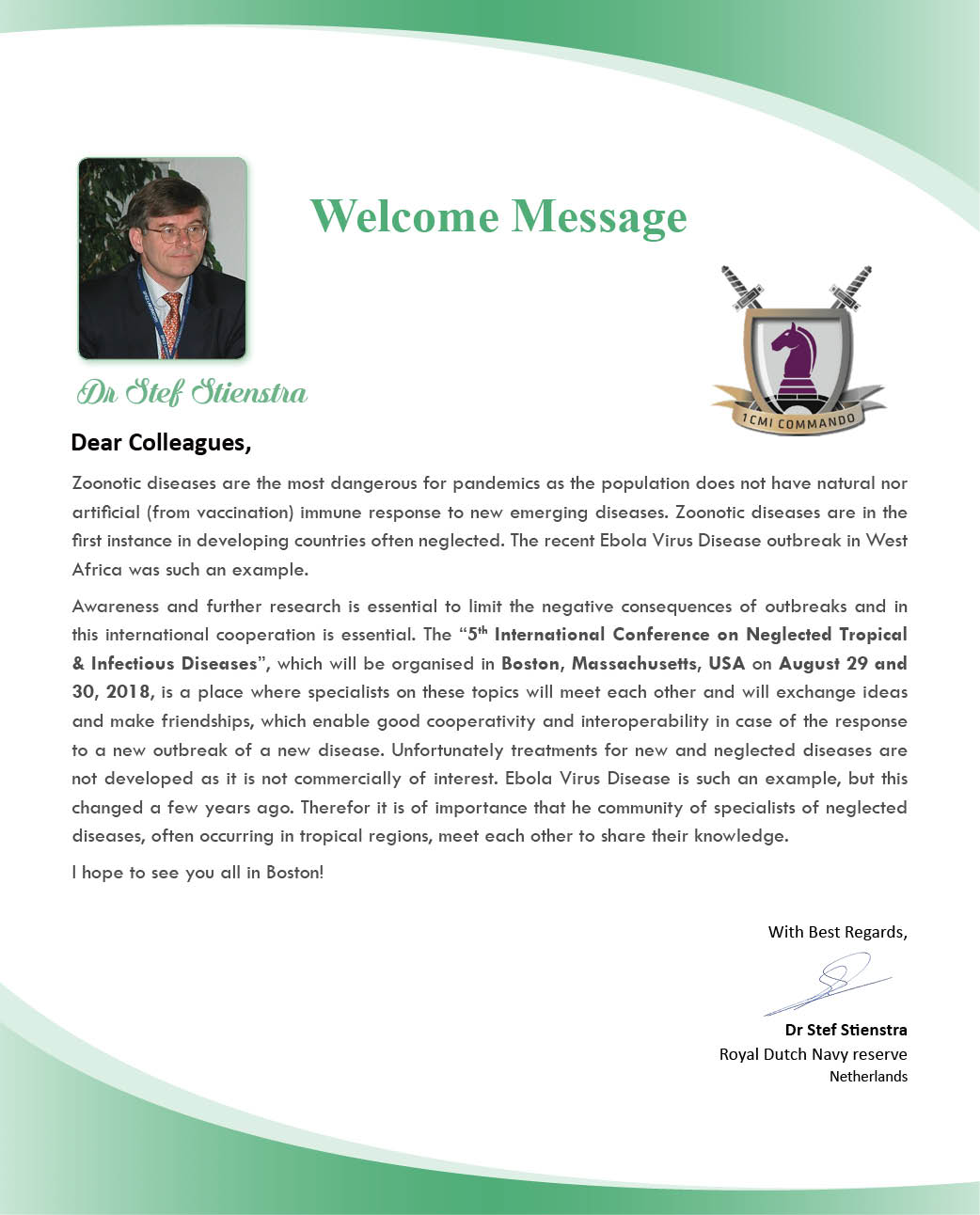
Session 01: Neglected Tropical Diseases-Facts and Figures
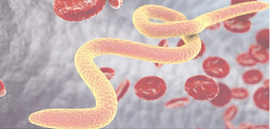
Neglected Tropical Diseases(NTDs) are a diverse group of communicable diseases that mostly prevail in tropical and subtropical conditions. The main causative agents of NTDs are bacteria, parasites, viruses, helminths, protozoa and almost include 18 infectious diseases. They mostly affect populations living in poverty (generally children), without proper sanitation and in close contact with various infectious vectors and disease causing livestock’s, and causes significant health and financial burdens across the underdeveloped nations. NTDs are very common and sometimes fatal and they regularly infect humans. They are prevalent in 149 countries affecting more than 1.4 billion people costing developing economies billions of dollars every year and are responsible for millions of deaths and disabilities each year, across the globe.
Neglected tropical diseases do not travel easily and are mostly concentrated in settings of extreme poverty in remote rural areas, in urban slums or conflict zones and thrive in conditions of impoverishment. Worldwide, 149 countries and territories are affected by at least one neglected tropical disease (NTD). NTDs kill an estimated 534,000 people worldwide every year. Most low-income countries are affected by at least five neglected tropical diseases simultaneously. Individuals are often afflicted with more than one parasite or infection. Treatment cost for most NTD mass drug administration programs is estimated at less than US fifty cents per person per year.
- Bacterial infectious diseases
- Viral infectious diseases
- Protozoa infectious diseases
- Helminths infectious diseases
- Deadly infectious diseases
- Mosquito borne diseases
- Blood borne infectious diseases
- Economic impact
- Drug development
- Diagnostic tools
- Technical feasibility
Related Societies and conferences
American Society for Parasitologists; American Society of Tropical Medicine and Hygiene; Austrian Society of Tropical Medicine, Brazilian Society of Infectious Diseases; British Infection Association (BIA); European Society for Paediatric Infectious Diseases; Federation of European Societies for Tropical Medicine and International Health; Finnish Society for International Health; German Society for Tropical Medicine and International Health; International Federation for Tropical Medicine; International Society for Neglected Tropical Diseases; Irish Forum for Global Health.
Session 02: Global Trends in Emerging Neglected Tropical Diseases
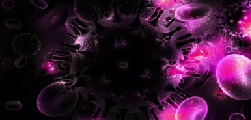
The emergence and re-emergence of old and new infectious diseases and its rapid spread to other parts of the globe are posing critical challenges in global heath. The reasons behind the spread of these types of vector population and global dispersion are rapid human development, including numerous changes in demographics, populations, the climate change and environmental imbalance. This has also led to zoonoses in the changing human-animal ecosystem, which are impacted by a growing globalized society where pathogens do not recognize geopolitical borders. Within this context, neglected tropical infectious diseases have historically lacked adequate attention in international public health efforts, leading to insufficient prevention and treatment options.
- Risk Factors and Challenges
- Support and funding
- Geographic, Environmental, and Social Determinants
- Ecology and Economic Development
Related Societies
Italian Society of Tropical Medicine; Japanese Society of Tropical Medicine; Malaysian Society of Parasitology and Tropical Medicine; Netherlands Society of Tropical Medicine and International Health (NVTG); Norwegian Forum for Global Health Research; Royal Society of Tropical Medicine and Hygiene; Societede Pathologie Exotique; Society of Tropical and Travel Medicine; Society of Tropical Medicine & Infectious Diseases in India; Spanish Society of Tropical Medicine and International Health; Swedish Society for Tropical Medicine and International Health; Swiss Society of Tropical Medicine and Parasitology; The Australasian College of Tropical Medicine.
Session 03: Most Common NTDs: Causes and Treatments
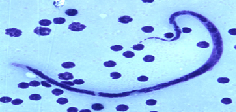
Neglected tropical diseases (NTDs) are the most common afflictions of the world's poorest people, affecting more than half a billion children around the world. It costs less than 50 cents per year to treat and protect one person from the most common NTDs. Most NTDs can be treated and prevented with medicine administered to entire communities at once in mass drug administrations (or MDAs). NTDs such as Schistosomiasis and Onchocerciasis are normally caused by worms or bacteria and occur in tropical climates. These diseases can be treated very cheaply using a 'rapid impact package' comprising five drugs that need only be taken once a year and do not require refrigeration. Such NTD interventions typically have a range of additional positive side effects. Other NTDs can be managed through available, low-cost measures.
- Guinea Worm Disease
- Lymphatic Filariasis
- Onchocerciasis
- Schistosomiasis
- Trachoma
- Soil-Transmitted Helminths
Related Societies
Italian Society of Tropical Medicine; Japanese Society of Tropical Medicine; Malaysian Society of Parasitology and Tropical Medicine; Netherlands Society of Tropical Medicine and International Health (NVTG); Norwegian Forum for Global Health Research; Royal Society of Tropical Medicine and Hygiene; Societede Pathologie Exotique; Society of Tropical and Travel Medicine; Society of Tropical Medicine & Infectious Diseases in India; Spanish Society of Tropical Medicine and International Health; Swedish Society for Tropical Medicine and International Health; Swiss Society of Tropical Medicine and Parasitology; The Australasian College of Tropical Medicine.
Session 04: Zika Virus: The Next Emerging Threat?

This mosquito-borne virus was discovered in 1947, although not much attention was paid to it because it was both rare and thought to cause only mild symptoms, if any. But recently, Zika virus has taken the world by surprise. The World Health Organization has declared a global emergency because of the virus’s rapid spread and its potential link to microcephaly and other neurological damage. Zika virus is primarily transmitted to humans through the bite of infected Aedes aegypti mosquitoes. Mostly, people who become infected with Zika virus do not become sick, 20 percent of people who do develop symptoms, the illness is generally mild and includes fever, rash, joint pain and conjunctivitis (red eyes).
- Addressing this critical topic
- Transmission, detection, control and prevention
- Intrinsically disordered side of the Zika virus proteome
- Brain abnormalities in fetuses
- Development of vaccine candidates
- Countering the Zika epidemic
Related Societies
Italian Society of Tropical Medicine; Japanese Society of Tropical Medicine; Malaysian Society of Parasitology and Tropical Medicine; Netherlands Society of Tropical Medicine and International Health (NVTG); Norwegian Forum for Global Health Research; Royal Society of Tropical Medicine and Hygiene; Societede Pathologie Exotique; Society of Tropical and Travel Medicine; Society of Tropical Medicine & Infectious Diseases in India; Spanish Society of Tropical Medicine and International Health; Swedish Society for Tropical Medicine and International Health; Swiss Society of Tropical Medicine and Parasitology; The Australasian College of Tropical Medicine.
Session 05: Ebola Virus Epidemic
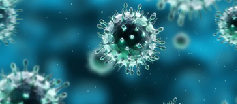
Ebola hemorrhagic fever is a disease caused by four different strains of Ebola virus; these viruses infect humans and nonhuman primates. The West African Ebola virus epidemic (2013–2016) was the most widespread outbreak of Ebola virus disease (EVD) in history—causing major loss of life and socioeconomic disruption in the region, mainly in the countries of Guinea, Liberia, and Sierra Leone. It caused significant mortality, with the case fatality rate reported at slightly above 70%, while the rate among hospitalized patients was 57–59%.
- Outbreak, Symptoms, and Treatment
- Clinical prognosis and diagnostic tests
- Cause and prevention
- Risk factors
- Latest research
Related Societies
American Society for Parasitologists; American Society of Tropical Medicine and Hygiene; Austrian Society of Tropical Medicine, Parasitology and Migration Medicine; Brazilian Society of Infectious Diseases; British Infection Association (BIA); European Society for Paediatric Infectious Diseases; Federation of European Societies for Tropical Medicine and International Health; Finnish Society for International Health; German Society for Tropical Medicine and International Health; International Federation for Tropical Medicine; International Society for Neglected Tropical Diseases; Irish Forum for Global Health, Infectious Diseases Society of America, International Society for Infectious Diseases-USA, International Conference on Tropical Infectious Diseases(ICTID), American Society For Microbiology, Canadian Association for Clinical Microbiology and Infectious Diseases
Session 06: Emergent Arboviruses: Dengue and Chikungunya

The arboviruses that cause dengue and chikungunya have rapidly amplified across the globe in recent years of this century, with havoc outbreaks in some territories in some closely attached areas of the United States (U.S.). Recently in March 2016, the Centers for Disease Control and Protection (CDC) provided the enlarged vector surveillance maps for A. aegypti and A. albopictus, the mosquito vectors for these arboviruses that are responsible for the recent global outbreaks. They have now been common and susceptible to a larger portion of the U.S. including densely populated northeast regions and some other parts of the globe.
- Outbreaks
- Diagnosis
- Symptoms and pathophysiology
- Molecular genetics and current research
- Therapeutic measures and vaccination
- Prevention, control and cure
- Public awareness
Related Societies
American Society for Parasitologists; American Society of Tropical Medicine and Hygiene; Austrian Society of Tropical Medicine,Brazilian Society of Infectious Diseases; British Infection Association (BIA); European Society for Paediatric Infectious Diseases; Federation of European Societies for Tropical Medicine and International Health; Finnish Society for International Health; German Society for Tropical Medicine and International Health; International Federation for Tropical Medicine; International Society for Neglected Tropical Diseases; Irish Forum for Global Health
Session 07: Infectious diseases Epidemiology
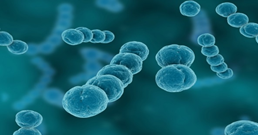
Infectious diseases are disorders caused by organisms — such as bacteria, viruses, fungi or parasites. Many organisms live in and on our bodies. They're normally harmless or even helpful, but under certain conditions, some organisms may cause disease.Some infectious diseases can be passed from person to person. Some are transmitted by bites from insects or animals. And others are acquired by ingesting contaminated food or water or being exposed to organisms in the environment.Signs and symptoms vary depending on the organism causing the infection, but often include fever and fatigue. Mild infections may respond to rest and home remedies, while some life-threatening infections may require hospitalization.Many infectious diseases, such as measles and chickenpox, can be prevented by vaccines. Frequent and thorough hand-washing also helps protect you from most infectious diseases.
The global top 6 infectious disease therapeutics market is expected to reach USD 86.2 billion by 2025, according to a new report by Grand View Research, Inc. The market is primarily driven by increasing number of Human Immunodeficiency Virus (HIV), Human Papillomavirus (HPV), TB, and hepatitis cases globally.
- Pneumococcal disease
- Measles
- Lyme disease
- HIV
- Influenza
- Malaria
- Analysis of existing infectious disease epidemiology data set
Related Societies
American Society for Parasitologists; American Society of Tropical Medicine and Hygiene,Austrian Society of Tropical Medicine, Brazilian Society of Infectious Diseases; British Infection Association (BIA); European Society for Pediatric Infectious Diseases; Federation of European Societies for Tropical Medicine and International Health; Finnish Society for International Health; German Society for Tropical Medicine and International Health; International Federation for Tropical Medicine; International Society for Neglected Tropical Diseases; Royal Society of Tropical Medicine and Hygiene, Irish Forum for Global Health, Infectious Diseases Society of America, International Society for Infectious Diseases-USA, International Conference on Tropical Infectious Diseases(ICTID), American Society For Microbiology, Canadian Association for Clinical Microbiology and Infectious Diseases
Session 08 : Emerging Infectious Diseases
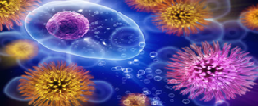
An infectious disease that has newly appeared in a population or that has been known for some time but is rapidly increasing in incidence or geographic range. Examples of emerging infectious diseases include: Ebola virus, Hepatitis C,Influenza A(H5N1) ,Legionella pneumophila , E. coli O157:H7, and Borrelia burgdorferi.
Another example of an emerging infectious disease is the new variant of Creutzfeldt-Jakob disease, which was first described in 1996. The agent is considered to be the same as that causing bovine spongiform encephalitis, a disease which emerged in the 1980s and affected thousands of cattle in the UK and Europe.
- West Nile Fever
- Lyme Disease
- Nosocomial/ Hospital Acquired Infection
- Severe Acute Respiratory Syndrome
Related Societies
American Society for Parasitologists; American Society of Tropical Medicine and Hygiene,Austrian Society of Tropical Medicine, Brazilian Society of Infectious Diseases; British Infection Association (BIA); European Society for Pediatric Infectious Diseases; Federation of European Societies for Tropical Medicine and International Health; Finnish Society for International Health; German Society for Tropical Medicine and International Health; International Federation for Tropical Medicine; International Society for Neglected Tropical Diseases; Royal Society of Tropical Medicine and Hygiene, Irish Forum for Global Health, Infectious Diseases Society of America, International Society for Infectious Diseases-USA, International Conference on Tropical Infectious Diseases(ICTID), American Society For Microbiology, Canadian Association for Clinical Microbiology and Infectious Diseases.
Session 9: Viral, Bacterial and Fungal Infections
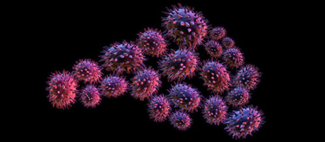
Viral infections are caused by a virus. Millions of types of virus are thought to exist, but only 5,000 types have been identified. Viruses contain a small piece of genetic code. They are protected by a coat of protein and fat. Not all viruses destroy their host cell. Some of them change the function of the cell. In this way, viruses such as human papillomavirus (HPV) or Epstein-Barr virus (EBV) can lead to cancer by forcing cells to replicate in an uncontrolled way.
Bacteria can live in almost any kind of environment, from extreme heat to intense cold, and some can even survive in radioactive waste.There are trillions of strains of bacteria, and few of these cause diseases in humans.
There are approximately 51 million species of fungus.Many fungal infections will appear in the upper layers of the skin, and some progress to the deeper layers. Inhaled fungal spores can lead to systemic fungal infections, such as thrush, or candidiasis.
- Adenovirus
- Herpes virus
- Human papillomaviruses (HPV) and herpes simplex virus (HSV).
- Hepatitis C
- bacterial meningitis
- pneumonia
- tuberculosis
- gastritis
- urinary tract infections
- skin infections
- valley fever, or coccidioidomycosis
- athlete's foot
- ringworm
- some eye infections
Related Societies
American Society for Parasitologists; American Society of Tropical Medicine and Hygiene,Austrian Society of Tropical Medicine, Brazilian Society of Infectious Diseases; British Infection Association (BIA); European Society for Pediatric Infectious Diseases; Federation of European Societies for Tropical Medicine and International Health; Finnish Society for International Health; German Society for Tropical Medicine and International Health; International Federation for Tropical Medicine; International Society for Neglected Tropical Diseases; Royal Society of Tropical Medicine and Hygiene, Irish Forum for Global Health, Infectious Diseases Society of America, International Society for Infectious Diseases-USA, International Conference on Tropical Infectious Diseases(ICTID), American Society For Microbiology, Canadian Association for Clinical Microbiology and Infectious Diseases.
Session 10 : Pathogenesis and Immunity

The pathogenesis of a disease is the state of biological mechanism that leads to the diseased state. The term can also describe the origin and development of the disease, and whether it is acute or chronic. This process includes the pathogen that gets you sick, the method of how you got it, and what happened in the cells once it's in your body. It is the ability of the body to resist foreign harmful microorganisms, pathogens from entering it. Immunity involves both specific and nonspecific components. The nonspecific components of the immune system act like barriers or as eliminators for a wide range of pathogens irrespective of antigenic specificity. Other components of the immune system adapt themselves for each new disease encountered.
- Pathogens and immune system: spread, persistence and transmission
- Microbial adherence
- Invasion of host cells and intracellular survival
- Evasion of immune responses
- Host interactions and system biology
- Vaccine development
Related Societies
Italian Society of Tropical Medicine; Japanese Society of Tropical Medicine; Malaysian Society of Parasitology and Tropical Medicine; Netherlands Society of Tropical Medicine and International Health (NVTG); Norwegian Forum for Global Health Research; Royal Society of Tropical Medicine and Hygiene; Societede Pathologie Exotique; Society of Tropical and Travel Medicine; Society of Tropical Medicine & Infectious Diseases in India; Spanish Society of Tropical Medicine and International Health; Swedish Society for Tropical Medicine and International Health; Swiss Society of Tropical Medicine and Parasitology; The Australasian College of Tropical Medicine.
Session 11: Dynamics and Consequences of Antimicrobial Resistance

Antimicrobial resistance is a vital key issue that is leading to millions of deaths every year. Due to antimicrobial resistance, most infections now have become completely untreatable. All microbes usually develop resistance such as fungi develop antifungal resistance, protozoa are developing antiprotozoal resistance, viruses develop antiviral and lastly bacteria developing antibiotic resistance. Bacterial along with the viral antibiotic resistance poses the largest threat to infection prevention in masses, the reason why the use of the antibiotics should only be prescribed when it is most needed and also with a proper prescription by the physician. To prevent this issue of antimicrobial resistance, awareness should be made to use only Narrow-spectrum antibiotics rather than broad-spectrum antibiotics so that targeted effect can be achieved.
- Genetic modification
- Multi drug resistance
- Antibiotic resistance
- Antimicrobial resistance mechanisms
- Resistance to antibacterial, antifungal, anti-viral agents, anti-parasitic, and anti-mycobacterial
Related Societies
Italian Society of Tropical Medicine; Japanese Society of Tropical Medicine; Malaysian Society of Parasitology and Tropical Medicine; Netherlands Society of Tropical Medicine and International Health (NVTG); Norwegian Forum for Global Health Research; Royal Society of Tropical Medicine and Hygiene; Societede Pathologie Exotique; Society of Tropical and Travel Medicine; Society of Tropical Medicine & Infectious Diseases in India; Spanish Society of Tropical Medicine and International Health; Swedish Society for Tropical Medicine and International Health; Swiss Society of Tropical Medicine and Parasitology; The Australasian College of Tropical Medicine.
Session 12: Advances in Antimicrobial Vaccines

Vaccination is a process of administration of an antigenic material (vaccine) into a living mechanism. The clinical effect desired is to cause stimulation of an individual's immune system in order to develop an adaptive immunity against the pathogen constituting the vaccine. Vaccination is the most effective method of prevention for infectious diseases. Vaccine Adjuvants are components which potentiate the immune system and accelerate the immune responses to an antigen. It can also be termed as an immunologic adjuvant. These components act to induce, prolong, and enhance antigen-specific immune responses when used in combination with specific vaccine antigens.
Antimicrobial is the agent that kills or restricts the cell growth. To fight against the potential bacteria now-a-days, the manufacturing companies are coming up with more advanced antimicrobial liquids/soaps/sanitizers. Immunization/Vaccination is one of the most cost effective public health interventions to date, saving millions of lives1 and protecting countless children from illness and disability. As a direct result of immunization, polio is on the verge of eradication. Deaths from measles, a major child killer, declined by 71 per cent worldwide and by 80 per cent in sub Saharan Africa between 2000 and 2011.2 And 35 of 59 priority countries have eliminated maternal and neonatal tetanus.
· Schistosomiasis
· Measles and mumps
· Yellow fever
· Coinfections
· Probiotics
· Probiotics
· Human microbiome
· Advancement in T-cell therapies
Related Societies
American Society for Parasitologists; American Society of Tropical Medicine and Hygiene,Austrian Society of Tropical Medicine, Brazilian Society of Infectious Diseases; British Infection Association (BIA); European Society for Pediatric Infectious Diseases; Federation of European Societies for Tropical Medicine and International Health; Finnish Society for International Health; German Society for Tropical Medicine and International Health; International Federation for Tropical Medicine; International Society for Neglected Tropical Diseases; Royal Society of Tropical Medicine and Hygiene, Irish Forum for Global Health, Infectious Diseases Society of America, International Society for Infectious Diseases-USA, International Conference on Tropical Infectious Diseases(ICTID), American Society For Microbiology, Canadian Association for Clinical Microbiology and Infectious Diseases
Session 13:Drug Discovery for Neglected Tropical & Infectious Diseases
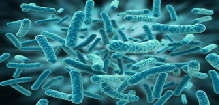
There is a compelling scarcity of pharmaceutical agents for efficacious, safe, and affordable treatment of neglected infectious or tropical diseases despite their high prevalence in the developing world. The current challenges in effective management of neglected diseases being the toxicity of drugs, microbial resistance patterns, and long courses of treatments. Factually Drug discovery is a comprehensively risky, lengthy and complex process. Interpreting the discovery of a novel therapeutic target into a clinical candidate can take several years. The regular drug discovery process requires the synthesis and evaluation of thousands of compounds for activity testing against multiple numbers of targets and off-targets. Starting from early discovery experiments, followed by translational studies in various animal models and then to clinical trials, there appears to be something wrong in this translation. The drop out of molecules when moved through the development chain, despite showing very promising activities in the in vitro models is high. The burden of drug discovery and development has fallen extensively to academic scientists and researchers who are involved in so-called translational research. A few focused private-sector groups, and some public–private partnerships, such as Medicines for Malaria Venture along with Drugs for Neglected Disease Initiative and the Institute for One World Health, and many more getting collaborated to overcome the Neglected Tropical Diseases.
The developing world suffers the major burden of infectious disease, yet the range of drugs available for the treatment of many infectious diseases is limited. Moreover, some currently available drugs are difficult to access or administer in developing country settings, while others remain unaffordable at the patient or health facility level; meanwhile, there is increasing resistance to some drugs. Many new public-private partnerships are developing new drugs for the diseases of poverty and they need new leads to work from.
- Identification and screening of libraries
- Pharmacology and pharmacodynamics
- Target-based approach
- Phenotypic approaches
- Medicinal chemistry approach
Related Societies
American Society for Parasitologists; American Society of Tropical Medicine and Hygiene; Austrian Society of Tropical Medicine, Parasitology and Migration Medicine; Brazilian Society of Infectious Diseases; British Infection Association (BIA); European Society for Paediatric Infectious Diseases; Federation of European Societies for Tropical Medicine and International Health; Finnish Society for International Health; German Society for Tropical Medicine and International Health; International Federation for Tropical Medicine; International Society for Neglected Tropical Diseases; Irish Forum for Global Health.
Session 14: Advances in Vector Biology Research
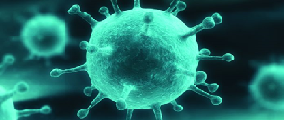
Vector-borne pathogens impact on public health, animal production, and animal welfare. Researches on various vectors such as mosquitoes, ticks, sandflies, and midges which transmit pathogens to humans are crucial for development of new control measures that target transmission by the vector. Novel and innovative tools for genetic manipulation and modifications of vectors, and some other biological vectors having good biological mechanisms with control mechanisms to prevent pathogen transmission have led to promising new developed strategies, adding a bold interest in vector biology and genetics both as vector-pathogen interactions. Vector research is therefore at a crucial juncture, with a lot of strategic decisions on future research directions and the investments.
- Challenges in prevention of vector-borne diseases
- Detection of molecular targets for drug development
- Novel diagnostics strategies
- Antiviral and antimicrobial treatment
Related Societies
American Society for Parasitologists; American Society of Tropical Medicine and Hygiene; Austrian Society of Tropical Medicine, Parasitology and Migration Medicine; Brazilian Society of Infectious Diseases; British Infection Association (BIA); European Society for Paediatric Infectious Diseases; Federation of European Societies for Tropical Medicine and International Health; Finnish Society for International Health; German Society for Tropical Medicine and International Health; International Federation for Tropical Medicine; International Society for Neglected Tropical Diseases; Irish Forum for Global Health.
Session 15: Rise of Multiomics: Integrative approach

As new technologies and methods are being developed every day, it is very much needed to further improve and innovate the filtering protocol with some more methods that can be helpful and used to increase the success rates of various researches in the biological and drug related discoveries. It includes high-throughput molecular techniques, uniquely called “omics” methods, have immensely increased our quality to classify the taxonomic and genetic structure of bacterial communities, so that their functional capabilities can be correctly estimated and the evaluation of the response to pathogens can be analysed correctly. Some of the used omics methods that are developed to date are sequencing, shotgun metagenomics, transcriptomics, proteomics, gene amplicon, and metabolomics. This technique now days is quite helpful in further innovations and findings of various therapeutics.
- Genome annotation
- Proteomics
- RNA isolation
- cDNA sequencing
- Gene expression analysis
- High-performance liquid chromatography with high-resolution tandem mass spectrometry
- Transcriptomics: next-generation sequencing
- Immunomic microarrays
Related Societies
Italian Society of Tropical Medicine; Japanese Society of Tropical Medicine; Malaysian Society of Parasitology and Tropical Medicine; Netherlands Society of Tropical Medicine and International Health (NVTG); Norwegian Forum for Global Health Research; Royal Society of Tropical Medicine and Hygiene; Societede Pathologie Exotique; Society of Tropical and Travel Medicine; Society of Tropical Medicine & Infectious Diseases in India; Spanish Society of Tropical Medicine and International Health; Swedish Society for Tropical Medicine and International Health; Swiss Society of Tropical Medicine and Parasitology; The Australasian College of Tropical Medicine.
Session 16: Translational Strategies to Prevent NTD’s & Infectious Diseases

The World Health Organization has already declared 17 major pathogenic and related infections as the neglected tropical diseases. Despite various achievements in the understanding of the nature and universality of NTDs, as well as successes in recent scaled-up preventive chemotherapy methods and other health involvements, the NTDs continue to rank among the world’s foremost global health problems. For virtually all of the NTDs, additional control mechanisms and various advanced tools are needed, including, vaccines, diagnostics, and vector control agents and new NTD drugs strategies. Elimination will not be possible without implementation of various innovative tools. Here we will discuss some of the key challenges in translational science to develop and introduce these new innovative technologies in order to ensure success in global elimination efforts.
Translational research is precisely defined as the process of applying ideas, insights and discoveries generated through basic scientific inquiry to the treatment or prevention of infectious diseases. The recent evolution in next-generation sequencing techniques and the introduction of high-throughput methods has resulted in an explosive cascade of research applications, spanning from target identification to diagnostics and therapeutics. These technical advances have provided the impetus for some radical changes in the way research itself is conceived and performed.
- Basic orientated clinical research
- Disease orientated clinical research
- Patient orientated clinical research
- Systems biology of viral and bacterial pathogens
- High-throughput drug discovery
Related Societies
American Society for Parasitologists ; American Society of Tropical Medicine and Hygiene; Austrian Society of Tropical Medicine, Parasitology and Migration Medicine; Be-Cause Health; Brazilian Society of Infectious Diseases; British Infection Association (BIA); European Society for Paediatric Infectious Diseases; Federation of European Societies for Tropical Medicine and International Health; Finnish Society for International Health; German Society for Tropical Medicine and International Health; International Federation for Tropical Medicine; International Society for Neglected Tropical Diseases; Irish Forum for Global Health.
Session 17 : NTD’s & Infectious Diseases Eradication: Novel Technologies and Treatments
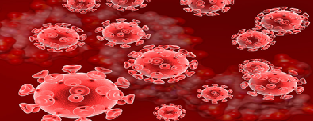
Currently, various disease-specific technologies such as drugs, vaccines, diagnostics, and vector control agents are available to facilitate the control or elimination of many of the world’s NTDs & Infectious Diseases . For most of these diseases drug, vaccine, diagnostic and vector control technologies are imperfect and have limited use because of their toxicities, inadequate efficacies, or because they do not prevent reinfection. Novel and innovative tools for genetic manipulation and modifications of biological mechanisms with control conditions will lead to development of various vaccines which would prevent pathogen transmission.
Despite the advancements and progress which has been made in the field of NTD’s & Infectious Diseases diagnostics over the past few years by some of the research organizations and other stakeholders, there remains a wide gap between the diseases and control. Of the 17 NTD’s & the for the wide number of Infectious Diseases on the WHO list almost 12 have a significant need for new and innovative diagnostic tests by various advance tools. It is therefore, very important to understand how and where we use the existing tools to make sure that they are giving output in a quality assured manner. The strategy development process also revealed the following sections in the field of NTD’s & Infectious Diseases.
· Preventive chemotherapy
· New NTD drugs
· New NTD vaccines
· Anthelminthic vaccines
· Kinetoplastid vaccines
· Plant-based vaccines against neglected tropical diseases
· Develop quantitative models of the economics of control versus eradication
· Proteasome protein complex method
· Broad spectrum antibacterial agents
· Collaborative drug discovery
· Bioactivity testing and screening
· Screening of natural products
· Bioluminescent live-imaging technique
Related Societies
American Society for Parasitologists ; American Society of Tropical Medicine and Hygiene; Austrian Society of Tropical Medicine, Parasitology and Migration Medicine; Brazilian Society of Infectious Diseases; British Infection Association (BIA); European Society for Paediatric Infectious Diseases; Federation of European Societies for Tropical Medicine and International Health; Finnish Society for International Health; German Society for Tropical Medicine and International Health; International Federation for Tropical Medicine; International Society for Neglected Tropical Diseases; Irish Forum for Global Health.
Session 18 : NTD’s Vaccines: Approaches and Challenges
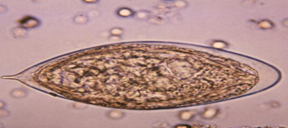
Vaccines and antimicrobials are among the most effective interventions in modern medicine, with far-reaching impacts on human health and disease. Effective vaccines are frequently unavailable in developing countries, and each year, millions of people die from vaccine-preventable and drug-treatable diseases. Furthermore, successful vaccines have yet to be developed for major global maladies, such as tuberculosis. In addition, technologies used to develop and manufacture vaccines are often outdated and not easily adaptable for rapidly responding to disease outbreaks, such as influenza. It can be difficult for manufacturers to successfully predict the dominant circulating influenza strains each season, and when new strains emerge suddenly, as in the 2009 H1N1 pandemic, rapid preparation for distribution of a new vaccine can be challenging.
· Hookworm vaccines
· Schistosomiasis vaccines
· Cysticercosis and echinococcosis vaccines
· Enteric protozoa vaccines
· Vaccines for leishmaniasis
Related Societies
American Society for Parasitologists ; American Society of Tropical Medicine and Hygiene; Austrian Society of Tropical Medicine, Parasitology and Migration Medicine; Brazilian Society of Infectious Diseases; British Infection Association (BIA); European Society for Paediatric Infectious Diseases; Federation of European Societies for Tropical Medicine and International Health; Finnish Society for International Health; German Society for Tropical Medicine and International Health; International Federation for Tropical Medicine; International Society for Neglected Tropical Diseases; Irish Forum for Global Health.
Neglected Tropical Diseases (NTDs) are a set of infectious diseases grouped together due to their often chronic, disfiguring, and stigmatizing impact; their close association with poverty; and their geographic overlap.
NTDs have low mortality but high morbidity rates.6 More than a billion people – one-sixth of the world’s population – are infected with one or more NTDs, and an additional two billion are at risk. Each year, about 185,000 people die as a result.7 Infection with an NTD may result in severe disability, disfigurement, blindness, and malnutrition, and individuals are often infected with multiple NTDs simultaneously. The health impact of NTDs negatively affects economic development, hampers educational achievement and cognitive development, and reduces agricultural productivity and food security.8
Endemic to almost 150 countries, NTDs span the globe.9 However, the majority of the NTD burden is concentrated in low- and middle-income countries in Africa, Asia, and Latin America.10 People living in rural areas as well as urban slums are among the most affected, since lack of access to clean water, health services, adequate housing, and good sanitation contribute to NTDs’ prevalence and impact. Women and children are most at risk of infection, since they are more exposed to NTDs and more often face barriers to accessing treatment, particularly those living in remote areas.
The World Health Organization (WHO) provides a list of 17 diseases: protozoan parasitic diseases (leishmaniasis, Chagas disease, and human African trypanosomiasis), bacterial diseases (yaws, leprosy, Buruli ulcer, and trachoma), viral diseases (dengue, chikungunyu and rabies) and helminth diseases (schistosomiasis, cystercercosis or taeniasis, onchocerciasis, lymphatic filariasis, diseases caused by soil-transmitted helminths echinococcosis and dracunculiasis and food-borne trematodiases). Cases have been made for the addition of others (for example mycetoma and to remove some (for example dengue) that are subject to substantial impact and research investment in middle-income countries. The list of infectious diseases included as NTDs by major international organizations varies; some bodies distinguish NTDs from the ‘big three’—HIV/AIDs, tuberculosis and malaria—referring to them as 'diseases of poverty’ on the basis of funding availability.
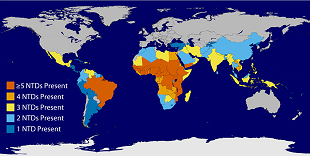
Only 10 % of global research and development resources were allocated for neglected diseases between 1975 and 2000, and only 13 new drugs were approved for their treatment within this time period.
Seven NTDs Targeted by USAID’s NTD Program
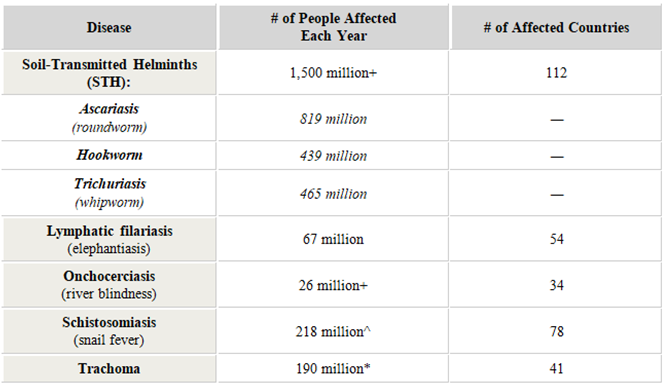
NOTES: — indicates the information in not available; ^ indicates number requiring preventive chemotherapy; * indicates active trachoma, trichiasis, and irreversible blindness due to trachoma.
Note: The other 12 diseases, representing 10% of the disease burden, are: dracunculiasis, cysticercosis, echinococcosis, food-borne trematodes infection, dengue, rabies, leishmaniasis, human African trypanosomiasis, Chagas disease, leprosy, Buruli ulcer and endemic treponematoses.
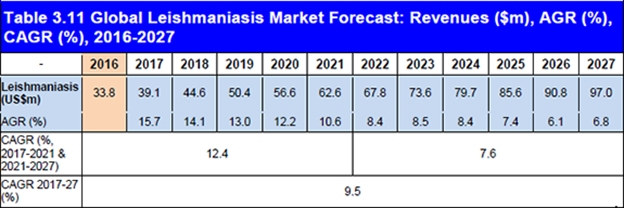
Global Treatment for Neglected Tropical Disease market forecasts from 2017-2027
Globally, about 120m people are infected with lymphatic filariasis, of whom about a third are disfigured or incapacitated. And this terrifying condition is just one of a Pandora’s box of horrors that have long afflicted humans in the warm, wet places of the world.
In the past five years it has coalesced into a well-organised and well-funded plan that is cutting transmission and pushing the number of new infections to previously unimaginable lows. There is more than Pandora’s hope at the bottom of the box: humanity is now capable of driving many NTDs out of existence by 2030.
Other drug firms, including GSK, Pfizer and Novartis, started to donate medicines on a large scale for other conditions. These included albendazole, another anti-parasitic for lymphatic filariasis; azithromycin, an antibiotic that works against trachoma (a bacterial infection that can cause blindness); and a combination of drugs for leprosy (another bacterial infection, which leads to skin lesions and nerve damage).
Each dollar spent on the control of lymphatic filariasis in China, or Chagas disease in Brazil, has been estimated to produce benefits of $15 and $17 respectively, by reducing spending on treatment and cutting the number of prematurely curtailed working lives.
The Gates Foundation has helped a lot. The firms said that they wanted help to deliver the free drugs that they were offering. At around the same time the WHO created a detailed plan for controlling each of the NTDs.
In 2012 the group signed the “London Declaration” which promised to control, eliminate or eradicate ten NTDs by the end of the decade. Since the signing of the London declaration, the alliance against NTDs has developed into the largest and most successful public-health initiative in history. The number of people at risk globally from NTDs has fallen by 20%.
In 2015, 1.5bn treatment doses were donated by drug firms, and almost a billion people received them—an increase of more than a third since 2012.
Whether STH infections, schistosomiasis, and onchocerciasis (now targeted by preventive chemotherapy) could be eliminated without new and additional tools has also generated debate.

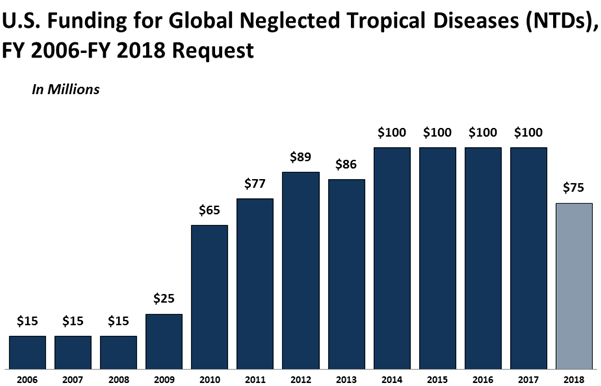
Disease Type Insights :-
On the basis of disease types, the market is segmented into HIV, malaria, hepatitis, influenza, Human Papillomavirus (HPV), and tuberculosis. In 2016, the HIV segment held the largest share i.e., 45.9% of the market. Increasing prevalence of HIV, rising funding activities for patients suffering from HIV, increasing supply of free HIV self-test kits in African countries, and rising awareness campaigns are the key factors responsible for the largest share held by this segment.
In 2016, hepatitis therapeutics segment held the second largest share in the top six infectious disease therapeutics market. Rising prevalence of hepatitis, increasing clinical trial activities for the launch of new drugs, and growing number of initiatives to increase the adoption of drugs are expected to be the factors responsible for the second largest share held by this segment. In addition, WHO aims to test 90% and treat 80% of the people suffering from HBV and HCV by 2030, through its Global Health Sector Strategy on viral hepatitis, which is further expected to contribute to the growth of this segment.
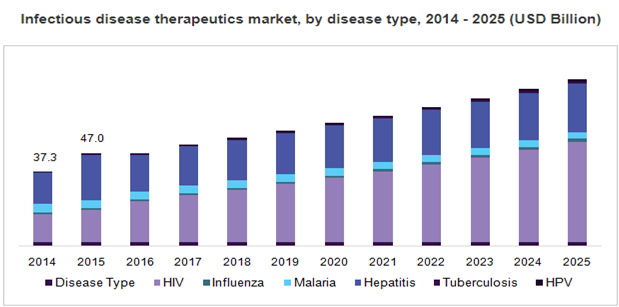
Significant players operating in Neglected Tropical & Infectious Diseases therapeutics market are as follows :-
- Novartis AG
- Gilead
- GlaxoSmithKline plc
- Janssen Pharmaceutical, Inc.
- F. Hoffmann-La Roche Ltd
- BioCryst Pharmaceuticals, Inc.
- Merck & Co., Inc.
- Boehringer Ingelheim GmbH
- Abbott
- Bayer HealthCare AG
- Bristol-Myers Squibb
- GlaxoSmithKline (Global)
- Johnson & Johnson
- Pfizer
Conference Highlights
- Emerging Infectious Diseases
- Ebola Virus Epidemic
- Emergent Arboviruses: Dengue and Chikungunya
- Infectious Diseases & Epidemiology
- Viral, Bacterial and Fungal Infections
- Pathogenesis and Immunity
- Dynamics and Consequences of Antimicrobial Resistance
- Advances in Antimicrobial Vaccines
- Drug Discovery for NTDs & Infectious Diseases
- Advances in Vector Biology Research
- Rise of Multiomics: Integrative approach
- Translational Strategies to Prevent NTD’s & Infectious Diseases
- NTD’s & Infectious Diseases Eradication: Novel Technologies and Treatments
- NTD’s Vaccines: Approaches and Challenges
- Entrepreneurs Investment Meet
- Neglected Tropical Diseases: Facts and Figures
- Global Trends in Emerging Neglected Tropical Diseases
- Most common NTDs: Causes and Treatments
- Zika Virus: The Next Emerging Threat?
To share your views and research, please click here to register for the Conference.
To Collaborate Scientific Professionals around the World
| Conference Date | August 29-30, 2018 | ||
| Sponsors & Exhibitors |
|
||
| Speaker Opportunity Closed | Day 1 | Day 2 | |
| Poster Opportunity Closed | Click Here to View | ||
Useful Links
Special Issues
All accepted abstracts will be published in respective Our International Journals.
- Journal of Tropical Diseases & Public Health
- Journal of Infectious Diseases & Therapy
- Journal of Infectious Diseases & Preventive Medicine
Abstracts will be provided with Digital Object Identifier by



















